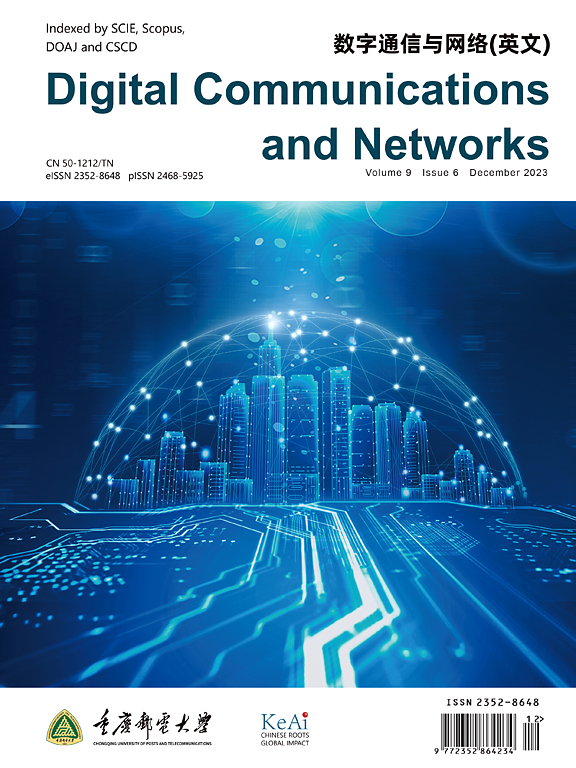基于协同训练模型的高效象流分类
IF 7.5
2区 计算机科学
Q1 TELECOMMUNICATIONS
引用次数: 0
摘要
大象流的准确早期分类对于网络管理和资源优化具有重要意义。大象模型主要基于流的字节数,总是可以达到很高的准确性,但不是时间效率高的方式。当要分类的流通过软件定义网络(sdn)上的流进入超时进行采样以实现更好的资源效率时,时间效率会变得更差。本文通过结合协同训练和强化学习(RL)来解决这种情况,以实现闭环分类方法,将整个分类过程划分为集,每个集涉及两个大象模型。其中一个预测大象,并通过选择由另一个自动在线标记的流进行再训练。RL用于制定奖励函数,该函数基于两个模型的当前状态估计可能行动的值,并进一步调整每个阶段要标记的流的比例。基于真实流量轨迹的广泛评估表明,所提出的方法可以使用大象生命周期前10%收到的数据包来稳定地预测大象,准确率超过80%,并且使用的控制信道带宽仅比进化的sdn的基线多10%左右。本文章由计算机程序翻译,如有差异,请以英文原文为准。
Accurate and efficient elephant-flow classification based on co-trained models in evolved software-defined networks
Accurate early classification of elephant flows (elephants) is important for network management and resource optimization. Elephant models, mainly based on the byte count of flows, can always achieve high accuracy, but not in a time-efficient manner. The time efficiency becomes even worse when the flows to be classified are sampled by flow entry timeout over Software-Defined Networks (SDNs) to achieve a better resource efficiency. This paper addresses this situation by combining co-training and Reinforcement Learning (RL) to enable a closed-loop classification approach that divides the entire classification process into episodes, each involving two elephant models. One predicts elephants and is retrained by a selection of flows automatically labeled online by the other. RL is used to formulate a reward function that estimates the values of the possible actions based on the current states of both models and further adjusts the ratio of flows to be labeled in each phase. Extensive evaluation based on real traffic traces shows that the proposed approach can stably predict elephants using the packets received in the first 10% of their lifetime with an accuracy of over 80%, and using only about 10% more control channel bandwidth than the baseline over the evolved SDNs.
求助全文
通过发布文献求助,成功后即可免费获取论文全文。
去求助
来源期刊

Digital Communications and Networks
Computer Science-Hardware and Architecture
CiteScore
12.80
自引率
5.10%
发文量
915
审稿时长
30 weeks
期刊介绍:
Digital Communications and Networks is a prestigious journal that emphasizes on communication systems and networks. We publish only top-notch original articles and authoritative reviews, which undergo rigorous peer-review. We are proud to announce that all our articles are fully Open Access and can be accessed on ScienceDirect. Our journal is recognized and indexed by eminent databases such as the Science Citation Index Expanded (SCIE) and Scopus.
In addition to regular articles, we may also consider exceptional conference papers that have been significantly expanded. Furthermore, we periodically release special issues that focus on specific aspects of the field.
In conclusion, Digital Communications and Networks is a leading journal that guarantees exceptional quality and accessibility for researchers and scholars in the field of communication systems and networks.
 求助内容:
求助内容: 应助结果提醒方式:
应助结果提醒方式:


